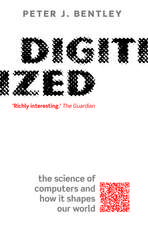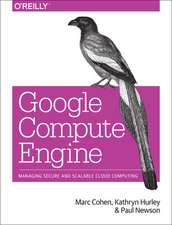Social Understanding: On Hermeneutics, Geometrical Models and Artificial Intelligence: Theory and Decision Library A:, cartea 47
Autor Jürgen Klüver, Christina Klüveren Limba Engleză Paperback – 27 ian 2013
| Toate formatele și edițiile | Preț | Express |
|---|---|---|
| Paperback (1) | 644.15 lei 6-8 săpt. | |
| SPRINGER NETHERLANDS – 27 ian 2013 | 644.15 lei 6-8 săpt. | |
| Hardback (1) | 650.59 lei 6-8 săpt. | |
| SPRINGER NETHERLANDS – 27 dec 2010 | 650.59 lei 6-8 săpt. |
Din seria Theory and Decision Library A:
- 18%
 Preț: 952.40 lei
Preț: 952.40 lei -
 Preț: 382.57 lei
Preț: 382.57 lei - 18%
 Preț: 958.25 lei
Preț: 958.25 lei - 18%
 Preț: 949.23 lei
Preț: 949.23 lei - 18%
 Preț: 1232.09 lei
Preț: 1232.09 lei - 15%
 Preț: 643.34 lei
Preț: 643.34 lei - 18%
 Preț: 948.92 lei
Preț: 948.92 lei - 15%
 Preț: 581.79 lei
Preț: 581.79 lei - 15%
 Preț: 644.49 lei
Preț: 644.49 lei - 15%
 Preț: 642.83 lei
Preț: 642.83 lei -
 Preț: 389.70 lei
Preț: 389.70 lei - 18%
 Preț: 947.67 lei
Preț: 947.67 lei - 15%
 Preț: 641.20 lei
Preț: 641.20 lei -
 Preț: 388.90 lei
Preț: 388.90 lei - 15%
 Preț: 640.37 lei
Preț: 640.37 lei - 18%
 Preț: 952.26 lei
Preț: 952.26 lei - 15%
 Preț: 641.20 lei
Preț: 641.20 lei - 18%
 Preț: 953.35 lei
Preț: 953.35 lei - 18%
 Preț: 952.89 lei
Preț: 952.89 lei - 18%
 Preț: 951.47 lei
Preț: 951.47 lei - 15%
 Preț: 636.94 lei
Preț: 636.94 lei - 18%
 Preț: 944.82 lei
Preț: 944.82 lei - 15%
 Preț: 643.84 lei
Preț: 643.84 lei - 18%
 Preț: 1383.81 lei
Preț: 1383.81 lei - 18%
 Preț: 1391.36 lei
Preț: 1391.36 lei - 20%
 Preț: 641.99 lei
Preț: 641.99 lei - 15%
 Preț: 647.40 lei
Preț: 647.40 lei
Preț: 644.15 lei
Preț vechi: 805.19 lei
-20% Nou
Puncte Express: 966
Preț estimativ în valută:
123.26€ • 129.02$ • 102.59£
123.26€ • 129.02$ • 102.59£
Carte tipărită la comandă
Livrare economică 31 martie-14 aprilie
Preluare comenzi: 021 569.72.76
Specificații
ISBN-13: 9789400734692
ISBN-10: 9400734697
Pagini: 268
Ilustrații: VIII, 260 p.
Dimensiuni: 155 x 235 x 14 mm
Greutate: 0.38 kg
Ediția:2011
Editura: SPRINGER NETHERLANDS
Colecția Springer
Seria Theory and Decision Library A:
Locul publicării:Dordrecht, Netherlands
ISBN-10: 9400734697
Pagini: 268
Ilustrații: VIII, 260 p.
Dimensiuni: 155 x 235 x 14 mm
Greutate: 0.38 kg
Ediția:2011
Editura: SPRINGER NETHERLANDS
Colecția Springer
Seria Theory and Decision Library A:
Locul publicării:Dordrecht, Netherlands
Public țintă
ResearchCuprins
1. INTRODUCTION: HISTORICAL, METHODICAL, AND CONCEPTUAL FRAMES.- 2. THE OPERATION CALLED “VERSTEHEN”: CONSIDERATIONS ABOUT FORMAL.- SYSTEMATIZATIONS OF UNDERSTANDING.- 3. MENTAL MODELS, THE GEOMETRY OF MEANING GENERATION AND OF INFORMATION.- 4. THE UNDERSTANDING OF LEARNING.- 5. THE HUMAN FACTOR: UNDERSTANDING HUMANS BY ARTIFICIAL SYSTEMS.- 6. CONCLUSIONS: AI AND A UNIFIED SCIENCE.- REFERENCES.
Recenzii
From the reviews:
“This very slim volume is an amazing tour through the philosophy of science (and the humanities), artificial intelligence (AI), and simulation. It demonstrates impressive scholarship over a diverse collection of disciplines. … The book has only 250 pages of text, plus references and an index. It is organized in five chapters, each of which has a theme. … Research on STEM education can be as challenging as research on discipline--if better questions are asked. This book can help scholars do this.” (Anthony J. Duben, ACM Computing Reviews, December, 2011)
“This very slim volume is an amazing tour through the philosophy of science (and the humanities), artificial intelligence (AI), and simulation. It demonstrates impressive scholarship over a diverse collection of disciplines. … The book has only 250 pages of text, plus references and an index. It is organized in five chapters, each of which has a theme. … Research on STEM education can be as challenging as research on discipline--if better questions are asked. This book can help scholars do this.” (Anthony J. Duben, ACM Computing Reviews, December, 2011)
Textul de pe ultima copertă
The operation of understanding is the fundamental methodical procedure of hermeneutics and is usually seen as contradiction to scientific explanation by the usage of mathematical models. Yet understanding is the basic way in which humans organize their everyday practice, namely by understanding other people and social situations. In this book the authors demonstrate how an integration of hermeneutical understanding and scientific explanation can be done via the construction of suited geometrical models with neural networks of processes of understanding. In this sense the authors develop some kind of mathematical hermeneutics. Connecting links for the integration of the two methodical poles are the developments of particular models of Artificial Intelligence (AI), which are able to perform certain tasks of understanding.
Caracteristici
Integration of hermeneutics and mathematics Development of AI-systems Goal of a unified science New insights into human cognitive processes











